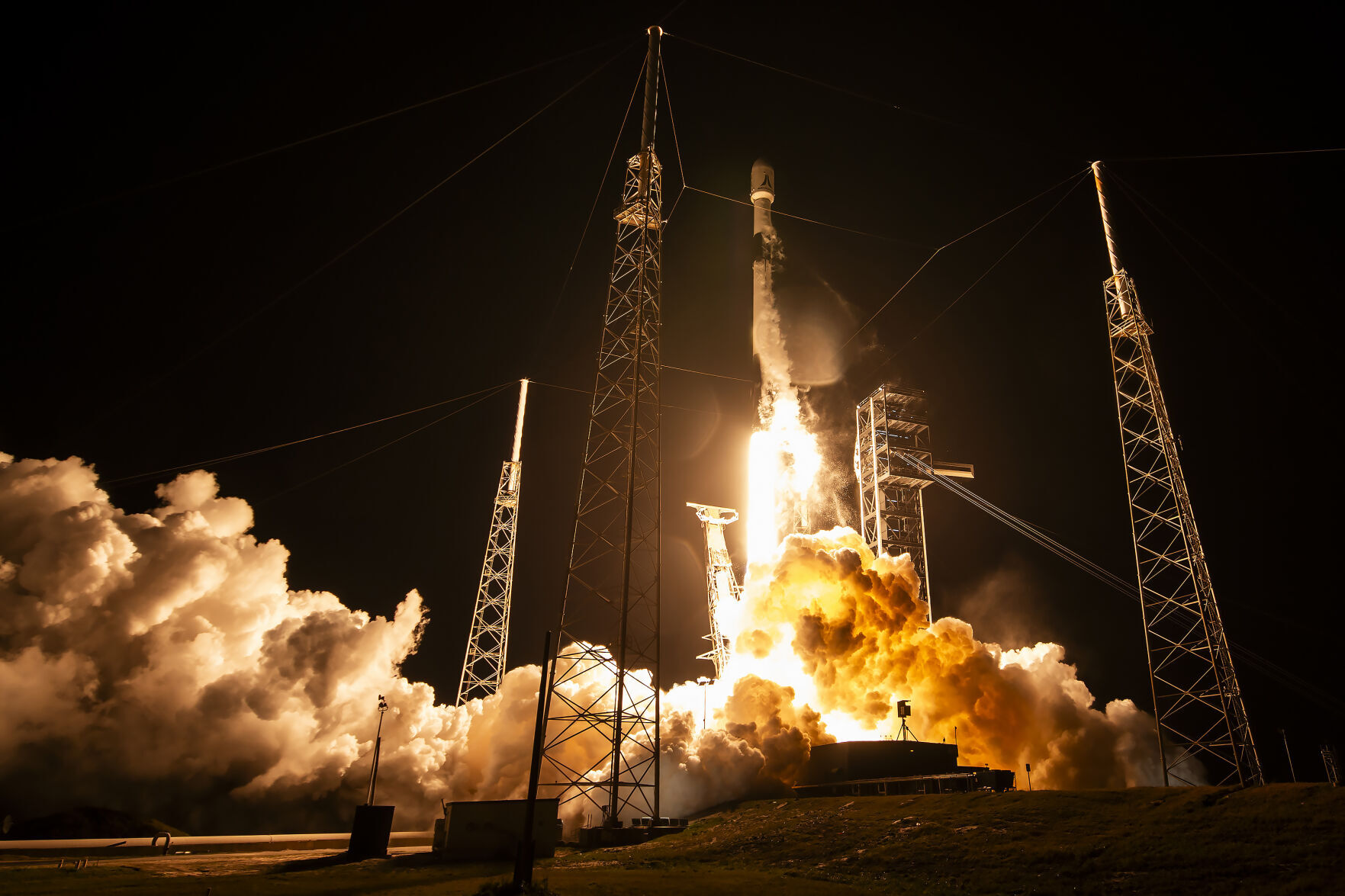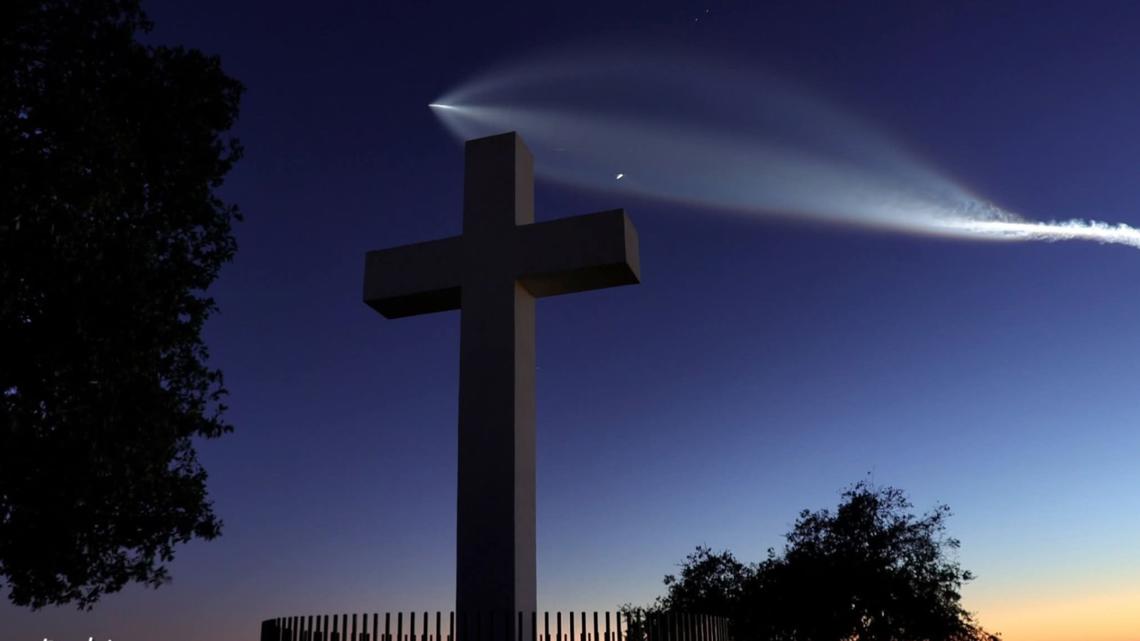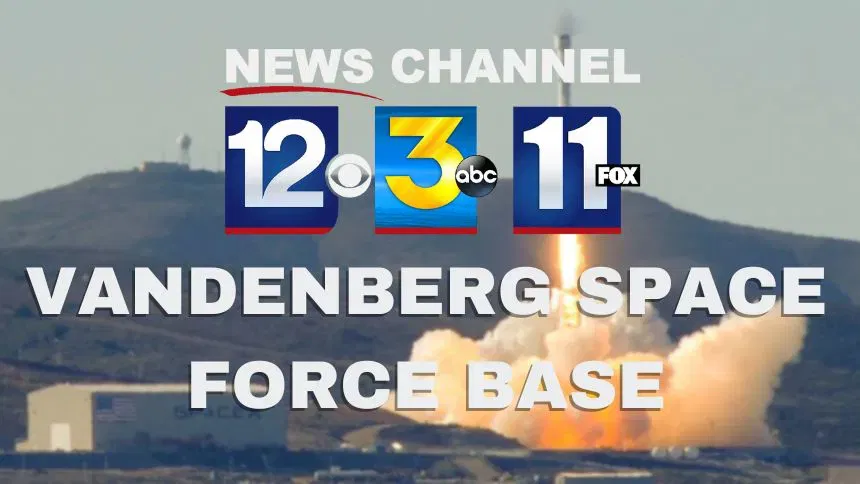SpaceX’s Falcon 9 rocket lit up California skies on Saturday night, successfully deploying 24 Starlink satellites from Vandenberg Space Force Base. The twilight launch created a breathtaking “space jellyfish” phenomenon visible across Southern California, marking SpaceX’s second Starlink mission of the day.
Residents reported hearing sonic booms and seeing strange light trails as the rocket’s first stage returned to Earth. This launch expands SpaceX’s growing internet constellation to over 7,950 active satellites, with another Falcon 9 mission scheduled from Vandenberg next week.
- SpaceX successfully launched 24 Starlink satellites from Vandenberg Space Force Base, marking their 14th mission with this particular Falcon 9 booster which previously launched USSF-62 and NROL-145 missions.
- The launch created a spectacular “space jellyfish” phenomenon as rocket exhaust particles scattered sunlight, visible across Southern California and prompting widespread observer questions.
- SpaceX plans its next Falcon 9 launch from Vandenberg on August 2nd to deploy additional Starlink satellites, continuing rapid expansion of their constellation which now exceeds 7,950 active satellites.
SpaceX Rocket Launch: Starlink Satellites Deployed from Vandenberg SFB – Next Falcon 9 Mission & Sky Light Phenomenon Explained
SpaceX Successfully Launches 24 Starlink Satellites from California

SpaceX achieved another successful launch as a Falcon 9 rocket carried 24 Starlink satellites to orbit from Vandenberg Space Force Base on July 26, 2025. The evening liftoff at 8:52 p.m. PDT created spectacular visual effects across Southern California, with many residents reporting mysterious bright trails in the sky. This marked the company’s 14th mission using this particular booster, which had previously launched critical missions including USSF-62 and NROL-145.
The deployment increases SpaceX’s active Starlink constellation to over 7,950 satellites, approaching their FCC-approved limit of 12,000 units. Notably, this was the second Starlink launch within 24 hours, following an early morning Florida mission that demonstrated SpaceX’s unprecedented launch cadence.
- Booster B1063 successfully landed on droneship “Just Read the Instructions”
- 14th flight for this particular first stage booster
- 7,950+ active Starlink satellites now in low Earth orbit

The Mysterious “Space Jellyfish” Phenomenon Explained


Numerous California residents reported seeing an unusual glowing formation resembling a jellyfish in the night sky following the launch. This phenomenon occurs when rocket exhaust particles at high altitudes catch and scatter sunlight, creating dramatic light displays visible across hundreds of miles. The effect is particularly striking during twilight launches when the sun’s angle creates optimal lighting conditions.
These atmospheric light shows have become increasingly common with SpaceX’s frequent West Coast launches, turning rocket launches into regular nighttime attractions for skywatchers. However, some astronomers have raised concerns about the growing light pollution affecting observations.
| Date | Location | Description |
|---|---|---|
| July 26, 2025 | Southern California | Jellyfish-shaped exhaust plume |
| April 3, 2024 | Southwestern U.S. | Spiral formation from upper stage |



Next Falcon 9 Mission: August 2nd Starlink Launch


SpaceX has scheduled its next Vandenberg launch for August 2nd, continuing its rapid deployment of Starlink satellites. The mission represents a return to normal operations after weather-related delays earlier in July, including a postponed TRACERS mission due to power outages affecting air traffic control systems.
The company’s ability to quickly recover from such setbacks demonstrates its operational flexibility. Unlike traditional aerospace contractors who might require weeks to reschedule, SpaceX managed to conduct two successful launches from different coasts within 24 hours.
- Primary payload: 22 Starlink v2 Mini satellites
- Target launch window: 7:30-11:30 p.m. PDT
- Booster will attempt landing on droneship



SpaceX’s Dominance in the Launch Industry


SpaceX’s launch frequency dwarfs all competitors, with 98 orbital launches in 2024 alone. Several key factors contribute to this market dominance:
- Reusability: Falcon 9 boosters can fly over 15 missions
- Vertical integration: Controls entire production chain
- Starlink demand: Regular internal customer
- Regulatory expertise: Streamlined approval processes
While other companies develop reusable systems, none match SpaceX’s refurbishment speed. The Falcon 9 booster from the July 26th mission had previously flown 13 times, with some boosters being relaunched in just three weeks.
| Provider | Launches | Reusable |
|---|---|---|
| SpaceX | 53 (through July) | Yes |
| ULA | 5 | No |



Viewing Starlink Satellites: When and Where to Look
Following each Starlink launch, observers can spot the satellites moving in a characteristic “train” formation. The best viewing occurs during twilight hours when sunlight reflects off the satellites while the ground below is dark.
For the July 26th batch, prime viewing over California will occur between July 28th and August 3rd. The satellites appear as a string of bright dots moving steadily across the sky before gradually dispersing to their operational orbits over subsequent weeks.
- Best viewing times: 30-90 minutes after sunset/before sunrise
- Visible for 5-7 days post-launch before dispersion
- Heavens-Above.com provides tracking predictions



Future SpaceX Missions from Vandenberg


Looking ahead, Vandenberg SFB will host several significant SpaceX missions:
- Crew-11 ISS mission (October): Next crew rotation flight
- TRACERS (August): NASA solar wind study
- Starlink deployments: Every 2-3 weeks
- Potential Starship operations: Possible by 2026
The introduction of Starship could revolutionize West Coast space operations, enabling heavier payloads and more ambitious missions from California. SpaceX continues constructing infrastructure to support this next-generation vehicle at Vandenberg.




Comments